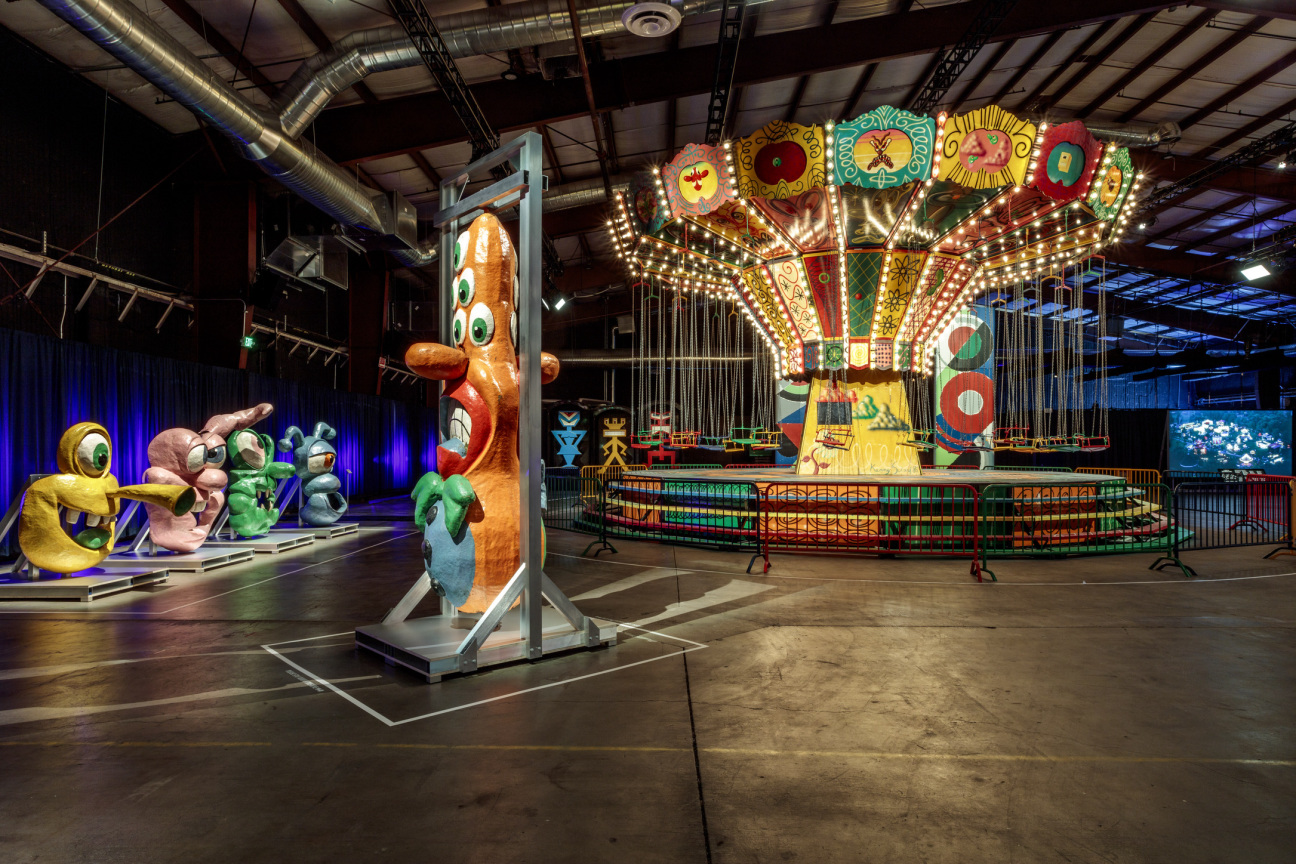
"Forgotten fantasy" encapsulates not only the exuberant, candy-colored aesthetic of Luna Luna but also its winding, decades-long odyssey from Hamburg, Germany, all the way to its new home in Los Angeles. The collection of phantasmagoric carnival rides—which also happen to be artistic follies crafted by some of the creative monuments of the past century: Jean-Michel Basquiat, Sonia Delaunay, Salvador Dalí, and David Hockney, to name a few—debuted in 1987. Then, the collection was shut away, kept from public view and entrenched in legal proceedings for so long that all hope of revival seemed lost. That is, until Drake and his Dreamcrew heard about it. A nine-figure investment later, Luna Luna has captured a whole new audience since opening last December and reigns as a social media darling.
Maintaining a canonical understanding and reverence for the legendary artists whose works are once again on display was crucial to the project. As such, the Luna Luna team turned to art-world insider Helen Molesworth for guidance. The former chief curator of MOCA has, in recent years, explored numerous eddies of art history with podcasts and writings for David Zwirner and other notable publications. A few months into Luna Luna’s new run, she takes CULTURED on a tour of her favorite restored pieces in the collection.
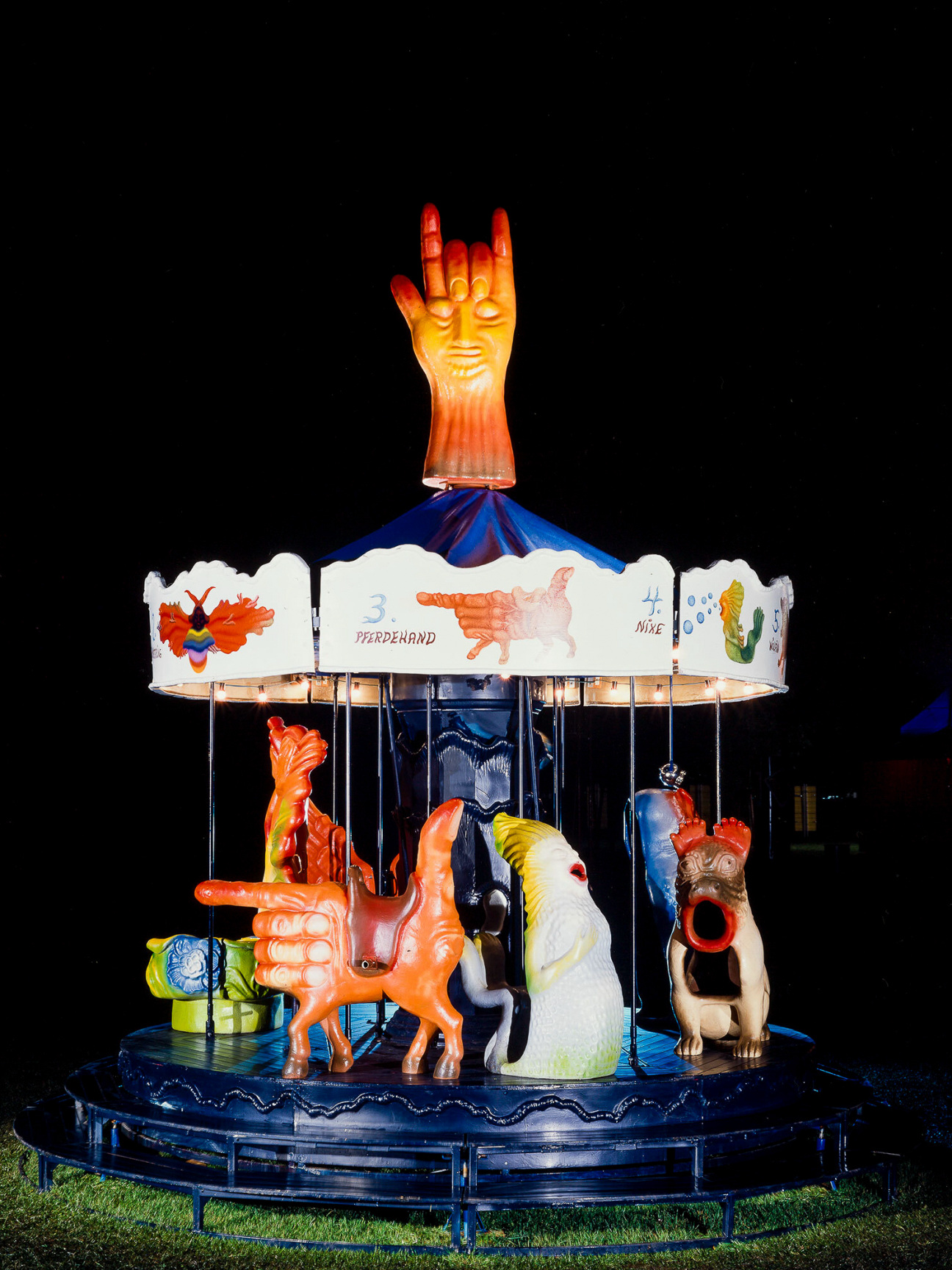
Arik Brauer, Carousel
“There are two works that bring me delight every time—the carousels. One is by Arik Brauer and the other by Keith Haring. I'm partial to the carousel because it’s the most whimsical and the most childlike of the rides. There's no fear involved. There's just spinning around and watching the world go around. I'm a little too scared to ride a Ferris wheel, so I love the carousels for that. I didn't know Arik Brauer before Luna Luna, and he's just been a massive discovery for me. All I want to do now is put on an Arik Brauer show because this guy is so fantastic. His carousel looks like sculpted marzipan, which is interesting because, of course, Vienna is the land of sweets. Those people eat dessert all day long. I don't understand it.
Arik Brauer's life's work is in the house that he shared with his wife Timna. They actually were a singing duo in Paris in the ‘50s, like cafe singers. They were the most staggeringly glamorous young couple. They had this groovy, bohemian life, and he—like many of the European artists in the show—was born into World War II. His father was Jewish and killed by the Nazis; the first years of his life, he's basically in hiding in Vienna. So for Arik and Timna Brauer, this is a post-WWII project. This is like, “lean into love, lean into childhood, lean into curiosity, lean into joy and pleasure” because the forces of war will ruin everything, right? And how do you counter that? So, I have a real soft spot for his carousel.”
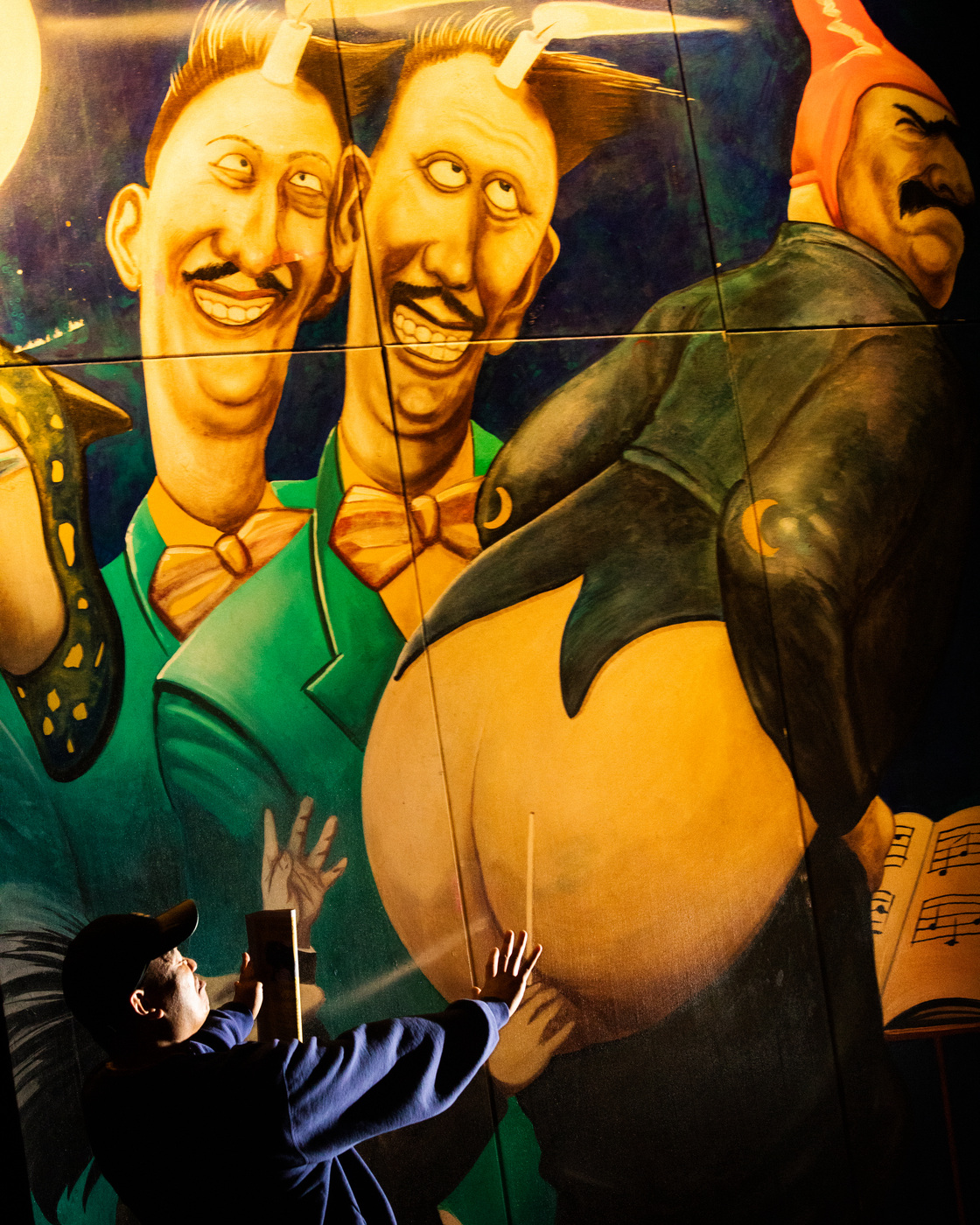
Manfred Deix, Palace of the Winds
“I never have been able to talk about farting in my professional life before, and so I'm very happy to have this opportunity to finally come clean. Manfred Deix was another one of the Viennese artists, and again, an artist I had never heard of. He made for Luna Luna something called Palace of the Winds. What I didn't know before this piece was that there are people called flatulists, and they are professional farters, and they can fart on cue. This actually started in France at the end of the 1800s. There was a very famous flatulist in cafe society who would basically fart his way through pieces of classical music. It's this real inversion of high culture and low culture. I'm basically eight years old in my head all the time, and there's never been a fart joke I didn't laugh at. Watching these guys fart to Beethoven's ‘Symphony No. 5’ just gets me every time.”
Gertie Fröhlich, Gingerbread booth with edible artwork
“One of the Viennese artists, a woman named Gertie Fröhlich, her contribution was to make gingerbread cookies—the most elaborate, fantastical gingerbread cookies you have ever seen. We couldn't figure out how to really do that. I hope in one of the iterations we can. She was a graphic designer, and I just love the idea that that's what she wanted to do: to make what I consider to be a Christmas cookie, but to give it out in the summertime.”
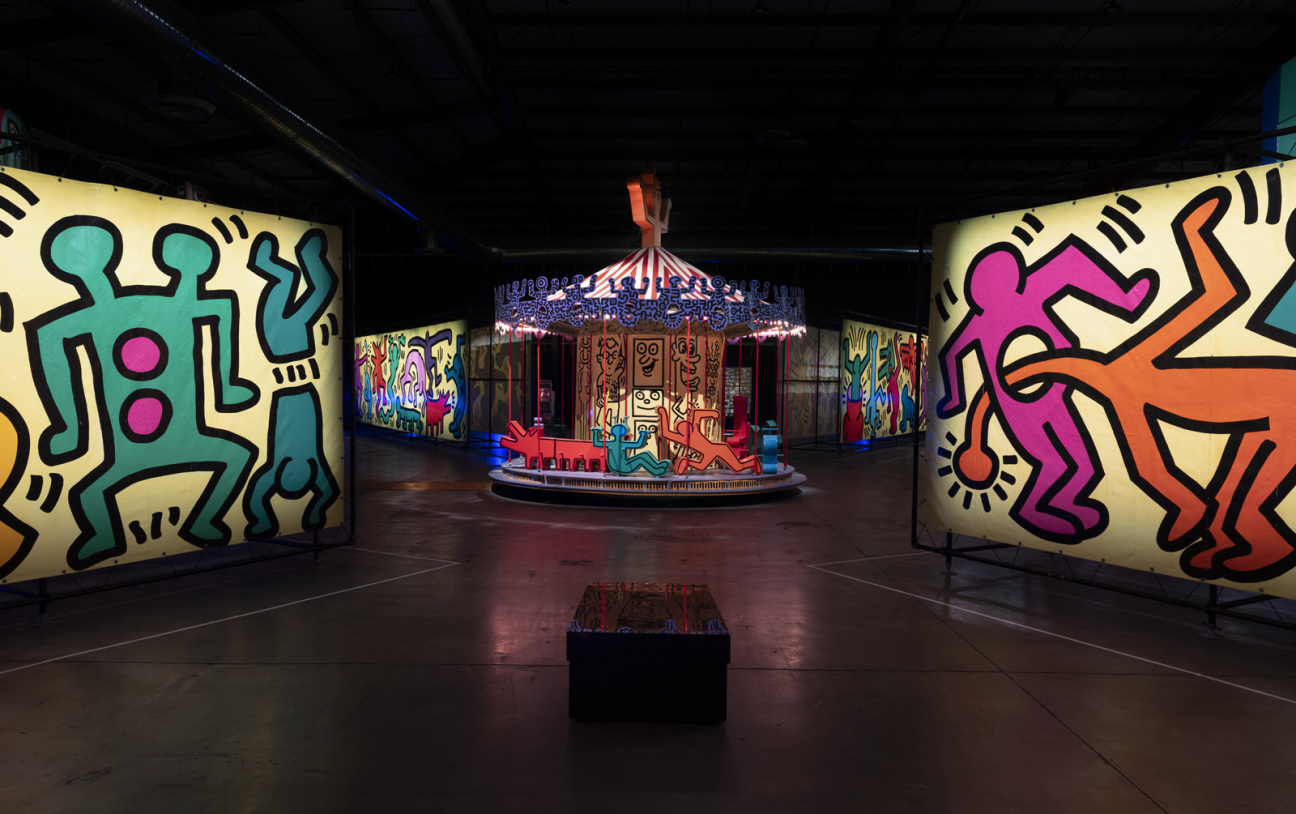
Keith Haring, Painted carousel
“We’ve come to think about Keith Haring, or I do anyway, really through the Pop Shop. We think about him as someone who made a lot of mass-produced merch, because he really was interested in the idea that art should be everywhere and anyone should be able to buy it. But he started out as a draftsperson, and he was making these incredible cartoons in the New York subway. For Luna Luna, he went to Vienna and actually made all of these marks himself. You really feel like he's in it; he's got a kind of ‘boom, boom, bam, bam.’ There's something metronomic and moving about the way the drawings appear on this. When it spins, I think you get that sense of musicality and playfulness even more. This one really gets to me. My wife is a Renaissance art historian, and when she saw this, I watched her eyes widen. She just said to me, almost sheepishly, ‘I love Keith Haring.’ And I was like, ‘I know, we all do.’ It’s a guilty pleasure, in part because he got so popular, but these forms and his lines are just fantastic.”
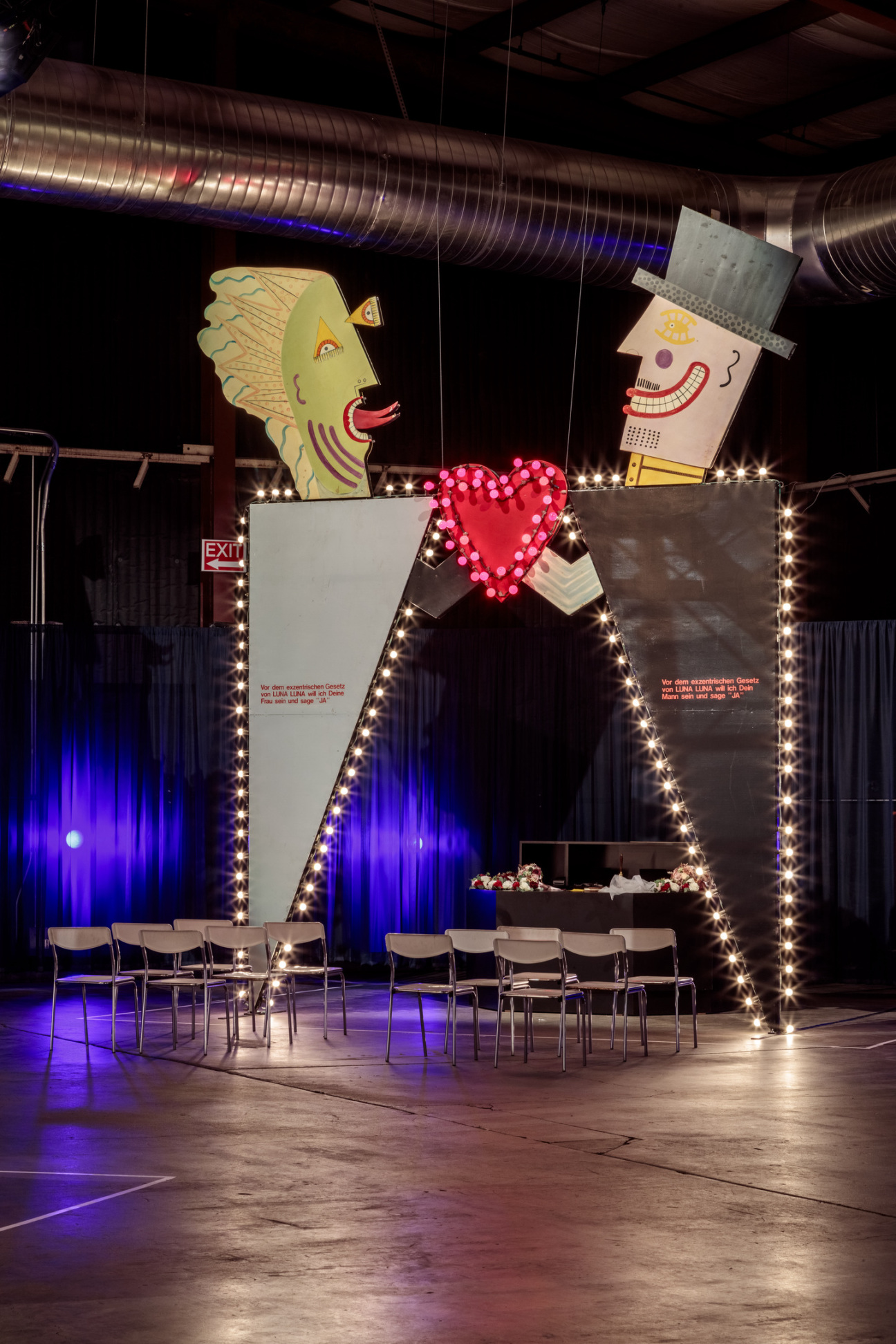
André Heller, Wedding Chapel
“The wedding chapel says a lot about André Heller. With Luna Luna, it's important to remember what was happening in 1987. In 1987, a lot of people I knew were still in the closet. It was not necessarily safe to be out as a gay person. And the AIDS crisis was beginning to take full effect. So I find it remarkable that in the middle of this carnival, André Heller made a wedding chapel where anyone could get married to anyone or anything—this idea of a total utopia where it didn't matter what or who you loved, it just mattered that you loved. That was what was important. If you get married at Luna Luna and you want to get divorced, all you have to do is rip up the paper. On opening night my wife and I got remarried. We got a little certificate. I've seen families get married. Like, “We're taking this moment to say that we're equal partners in this family and that we are married.” I found that really moving.










 in your life?
in your life?

